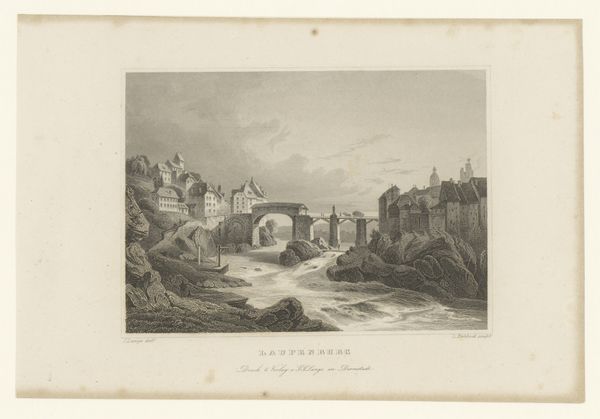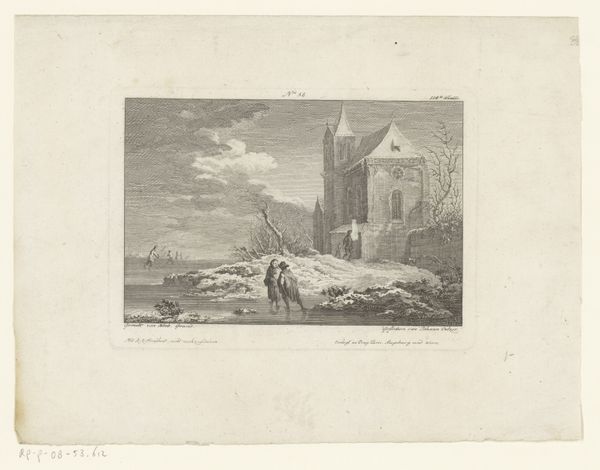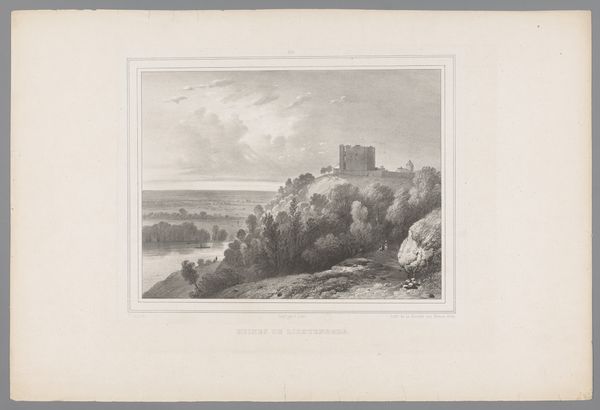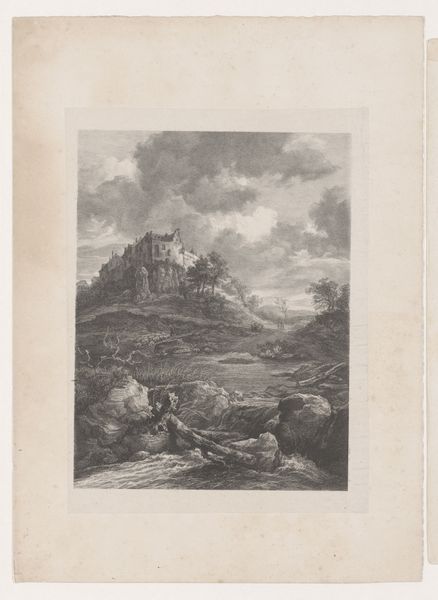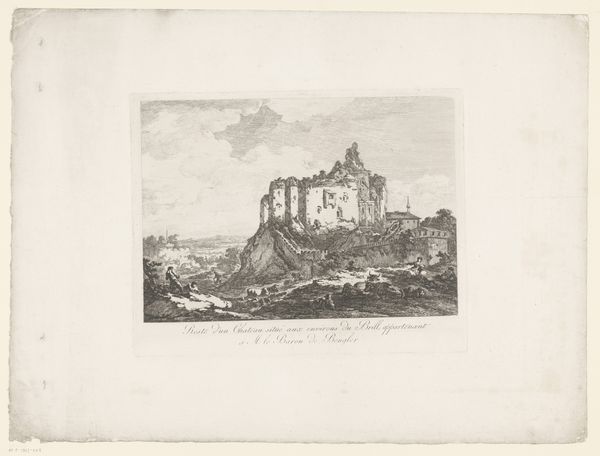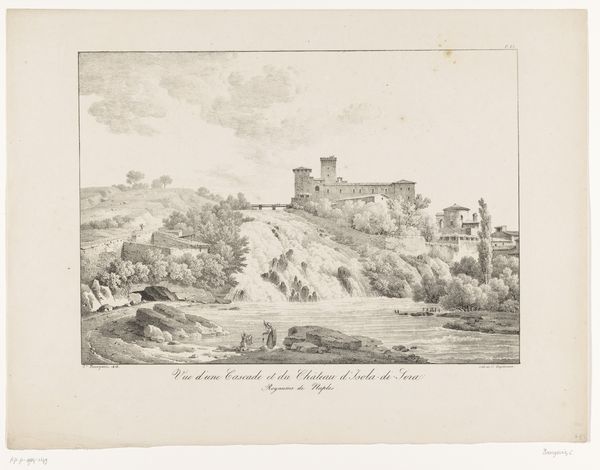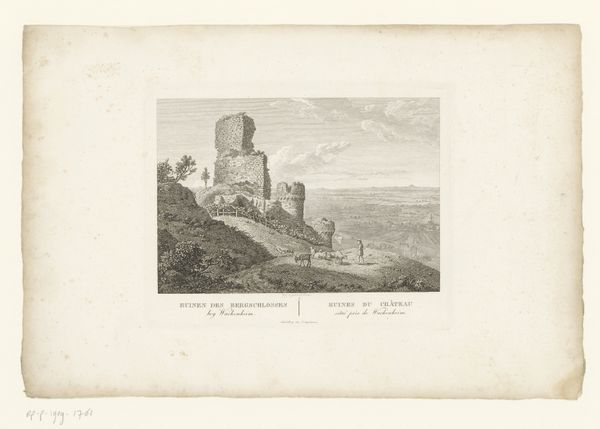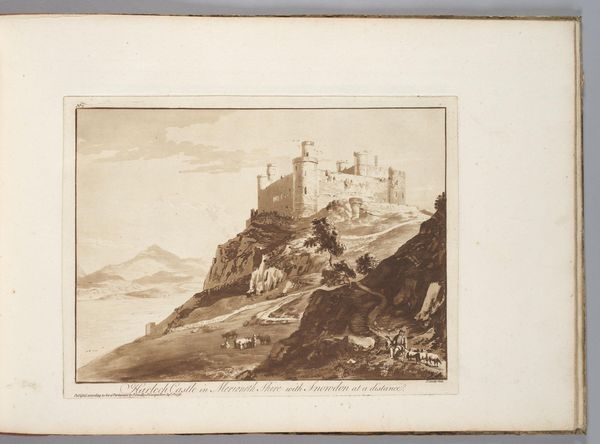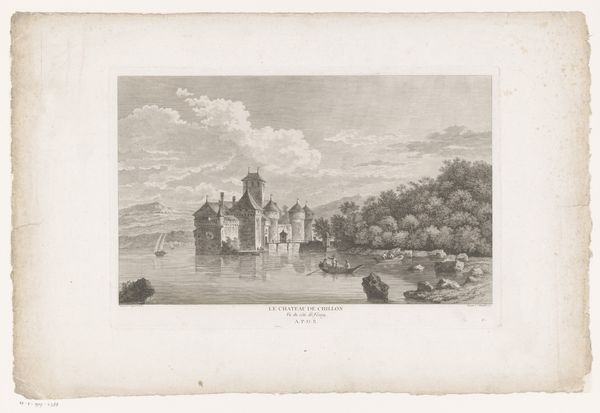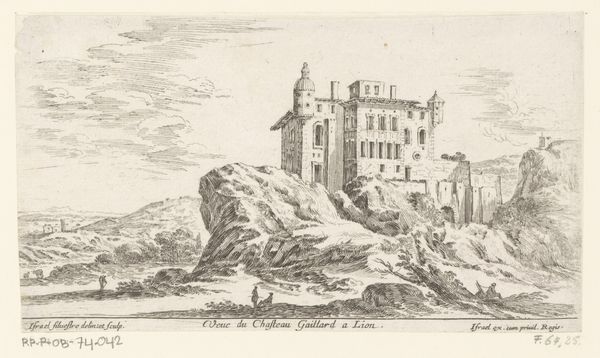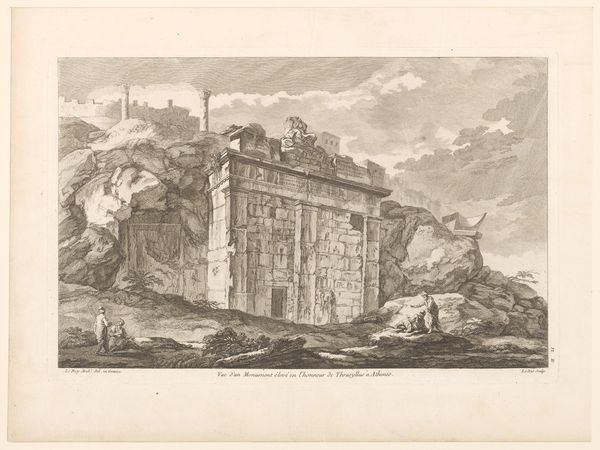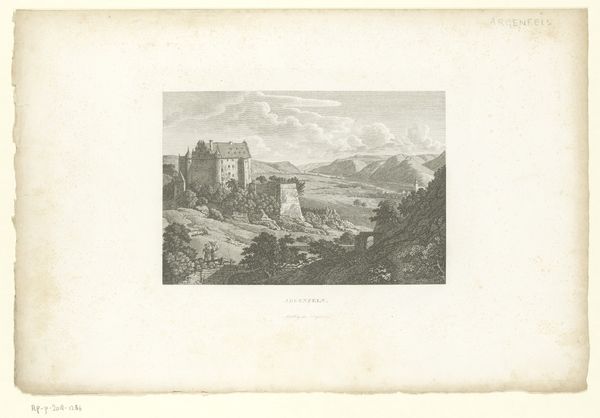
print, engraving
#
neoclacissism
# print
#
old engraving style
#
landscape
#
cityscape
#
engraving
Dimensions: height 229 mm, width 277 mm
Copyright: Rijks Museum: Open Domain
Editor: Here we have James Fittler's "Gezicht op Culzean Castle," created around 1801 or 1802. It’s a print, an engraving to be exact, and it has that wonderful old engraving style. The scene itself is quite dramatic! I'm curious about your take. What stands out to you in this piece? Curator: This image exemplifies the material conditions of artistic production at the turn of the 19th century. The printmaking process – the very labor involved in the engraving, the paper milled, the ink applied – democratized images of power and place. Notice how this contrasts the elevated subject of Culzean Castle, a symbol of aristocratic wealth and control. Editor: So, you're saying that the process of making the artwork kind of undercuts what the image itself is showing? Curator: Precisely. Consider who would be consuming this image. It's reproducible. It becomes a commodity. Is it a souvenir? A symbol of aspiration? How did these images circulate and shape perceptions of class and property? The neoclassical aesthetic itself reinforces ideas of order and control... Editor: That makes me wonder about the small figures pulling the boat near the foreground. Are they supposed to be staff who would work at the castle? Curator: Exactly! Reflect upon the lives of those who built and maintained Culzean Castle. Their labor, though absent from the castle’s grandeur, is subtly present in this image. Editor: That gives me a new perspective to reflect on – the connection between the work to produce the art, and the work of the figures within the artwork itself. Thanks! Curator: Indeed! Examining the material and social contexts reveals a richer, more complex narrative about art, labor, and the very structures of society.
Comments
No comments
Be the first to comment and join the conversation on the ultimate creative platform.
